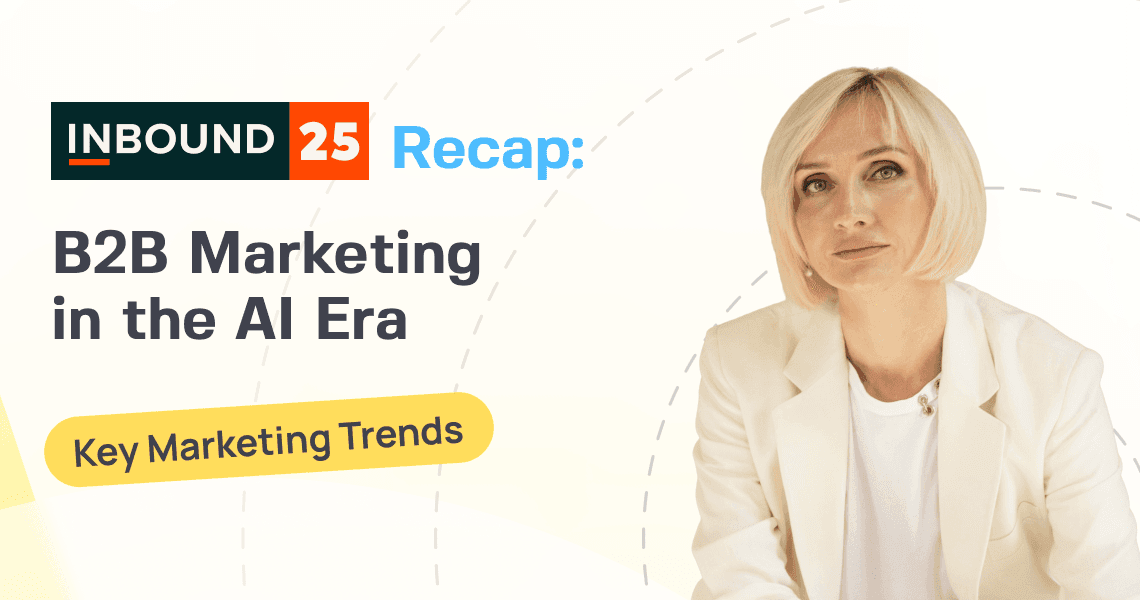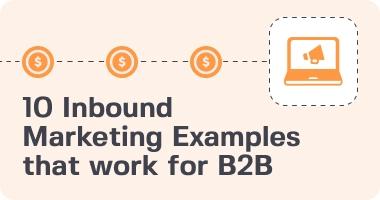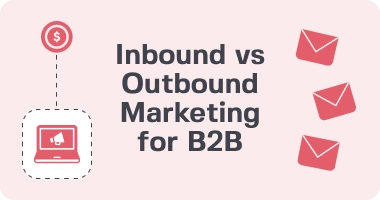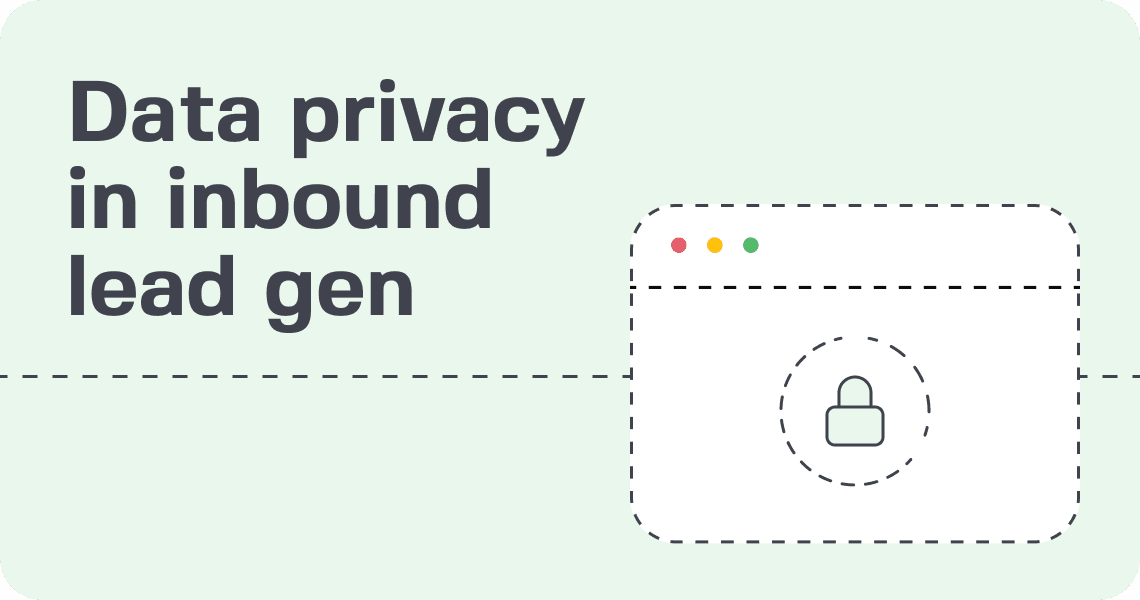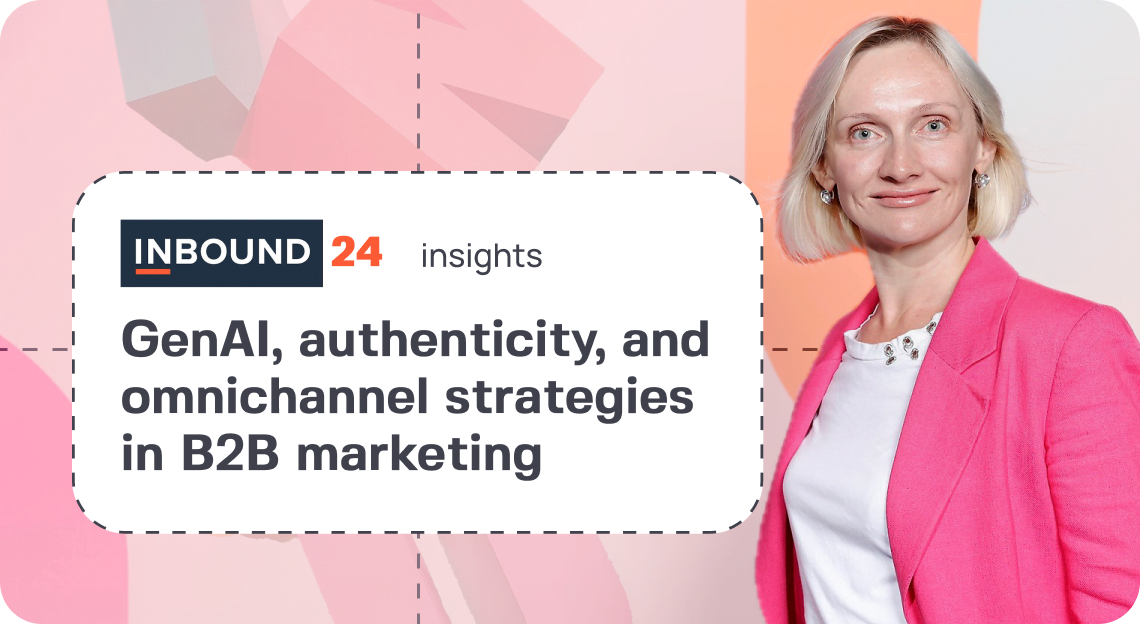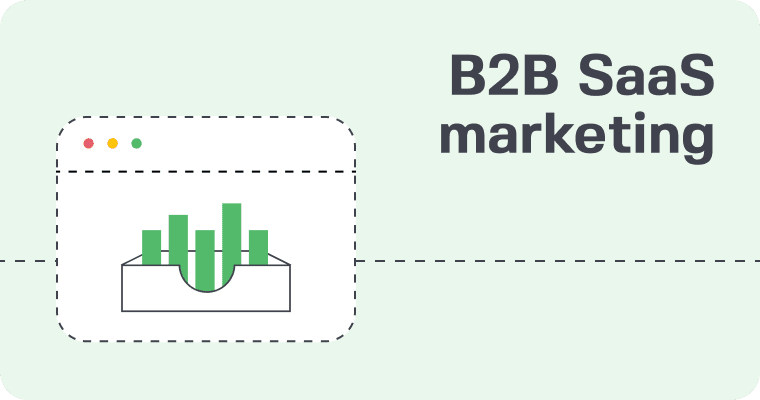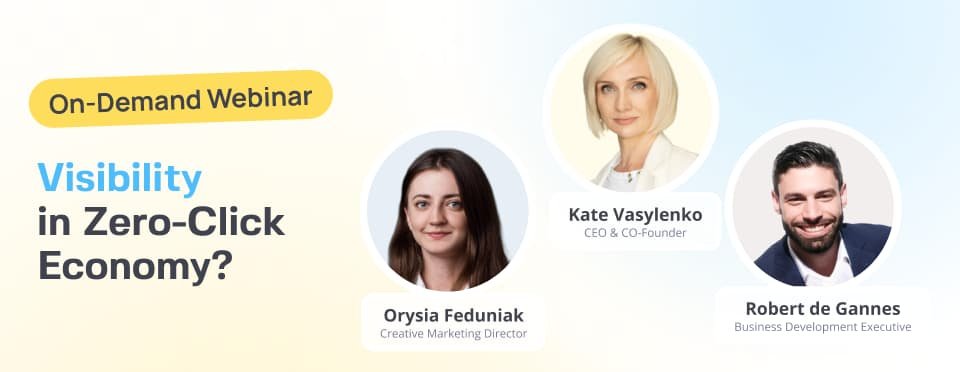Today, B2B tech enterprises are navigating a challenging landscape where efficiency, relevance, and buyer trust are more critical than ever. With tighter budgets, increased competition, and rising skepticism across the marketing funnel automation, inbound marketing is no longer just about content — it’s about creating real, measurable value at every stage of the buyer journey.
To succeed, enterprise marketing leaders must shift toward data-driven, AI-enhanced, and product-integrated inbound tactics that reflect today’s market realities. B2B marketing and digital marketing are evolving rapidly, requiring new inbound marketing focuses to stay ahead.
The Current Challenges Facing Tech Enterprises
Today’s enterprise buyer is more selective, more independent, and less tolerant of generic messaging than ever before. To effectively engage potential buyers and prospective customers, it is essential to develop multiple detailed buyer personas that reflect the diverse needs and preferences of your target audience. Attracting and engaging potential customers throughout the buyer’s journey is key, as they move from initial awareness to consideration and ultimately to decision-making. Understanding both new and existing customers is crucial for overcoming today’s challenges and refining your inbound marketing strategies.
| Challenge | Inbound Tactic That Solves It | Enterprise Benefit |
| Economic slowdown & cautious buyers | Insight-led content, product-led demos | Trust-building, shorter sales cycle |
| AI content saturation | SEO topical clusters, video, personalization | Visibility, engagement, conversion |
| Cost pressure | RevOps, freemium loops, automation | Lower CAC, efficient pipeline growth |
| Demand for transparency | Community, customer voice content | Authenticity, higher retention |
Let’s dive into the account-based marketing tactics that are helping B2B tech enterprises lead, not lag behind.
1. Insight-Led Content Strategy
A data-driven approach to content marketing that focuses on creating high-quality content tailored to your target audience’s specific challenges, industries, and buying stages. Instead of generic content, it leverages original research, customer data, industry benchmarks, and subject matter expertise to address real problems your buyers face—especially in complex, high-stakes enterprise environments. Creating content that resonates with your audience and directly addresses their needs is essential for effective inbound marketing strategies. Insight-led content strategy helps build credibility, differentiate your brand from competitors, and guide prospects through long B2B sales cycles by offering clear, evidence-based value at every touchpoint. Inbound marketing content and blog posts play a crucial role in building credibility and guiding prospects through the buyer’s journey.
Solves:
- Buyer distrust
- Long consideration phases
- Content fatigue
How to activate:
Build research-backed whitepapers, vertical-specific case studies, and executive explainers that map to your ABM strategy and are accessible without form-filling. Incorporate engaging content formats, such as interactive case studies or multimedia experiences, to capture attention and build trust with your audience.
Business Impact: Increases trust, accelerates decision-making, and differentiates your brand as a thought partner — not a vendor.
Why it works:
Enterprise buyers don’t want sales decks — they want proof. That means real data, B2B SaaS benchmarks, and strategic insights tied to their business goals.
Modern content must address:
- Specific pain points in the buyer’s ecosystem
- Strategic themes (e.g., AI regulation, operational efficiency, cybersecurity risk)
- Business outcomes with numbers — not narratives
To ensure your content is discoverable and reaches the right audience, keyword research and search engine optimization (SEO) are essential. Creating SEO-optimized content improves visibility, drives engagement, and supports your lead generation and inbound marketing efforts.
2. AI-Powered Personalization at Scale
Artificial intelligence is used to deliver tailored content, messaging, and experiences to each prospect or customer based on their behavior, role, industry, and stage in the buyer journey—automatically and across all digital channels. Instead of manually segmenting audiences or guessing what content might resonate, AI analyzes real-time data to predict intent and serve the most relevant content, emails, or product recommendations. This means significantly improved engagement, higher lead quality, and more efficient use of marketing resources, all while creating a buying experience that feels personal and relevant at enterprise scale.
Solves:
- One-size-fits-none messaging
- Website disengagement
- Email fatigue
How to activate: Use AI to adapt site content, email flows, chatbot responses, and even ad creative based on behavior, firmographics, and CRM data. Think: predictive personalization, not just merge tags.
Business Impact: Improves engagement metrics, lowers bounce rates, and increases lead-to-opportunity velocity.
Why it works:
In an AI-saturated web, context is the new currency. When a VP of Engineering from a SaaS company hits your site, they should see a different story than a procurement lead from manufacturing.
3. Product-Led Inbound Loops
A growth strategy where the product itself becomes a key driver of customer acquisition, engagement, and conversion—without heavy reliance on traditional sales outreach. In this model, B2B tech enterprises offer value upfront through free trials, freemium versions, or interactive demos that allow prospects to experience the product’s benefits before speaking with sales. Inbound sales teams benefit from engaging prospects who already have a positive impression of the brand due to inbound strategies, making it easier to close deals and build trust. As users find value and share their experience, they generate organic word-of-mouth and bring in more users, creating a self-sustaining loop. Product-led inbound loops align with modern buyer preferences for hands-on evaluation and shorten the sales cycle by building trust and product familiarity early in the journey.
Solves:
- CAC pressure
- Resistance to gated sales conversations
How to activate:
Deploy interactive demos, freemium tiers, and “reverse trials” that offer premium features for a limited time. Pair this with contextual onboarding and in-product CTAs to upsell intelligently.
Business Impact: Drives pipeline without cold outreach, builds trust faster, and creates organic user acquisition loops.
Why it works:
Today’s buyers want to try before they talk. Product-led inbound tactics — like free tools, guided demos, and sandbox environments — allow hands-on exploration, making your product the entry point to your funnel.
4. SEO & Topical Authority Clusters
A strategic content approach that helps build long-term search visibility by organizing content around key themes or “clusters” that demonstrate deep expertise on specific topics. Instead of targeting isolated keywords, this method involves creating a central “pillar” page on a broad topic (e.g., “AI in Enterprise Security”) and supporting it with interlinked subtopics (e.g., “AI Threat Detection,” “AI Compliance Risks”). This structure signals to search engines that your site is a trusted authority. With the search landscape shaped by AI-driven algorithms and higher content scrutiny, topical authority clusters ensure sustainable lead generation and better engagement with high-intent enterprise buyers.
Solves:
- Search invisibility
- AI disruption of traditional SEO
How to activate:
Build topic clusters around core enterprise challenges (e.g., “AI compliance in cloud environments”), link internal pages strategically, and attribute content to subject matter experts to build trust and E-E-A-T.
Business Impact: Long-term visibility in high-intent search queries, compounding organic lead gen, and defensible digital authority.
Why it works:
Google’s AI algorithms now reward depth, topical authority, and real-world expertise. Keyword stuffing and shallow content don’t cut it.
5. Community & Ecosystem Engagement
The practice of actively participating in and contributing to the online and offline spaces where your target audience, partners, and industry influencers gather—such as LinkedIn groups, Slack communities, Discord channels, and niche forums. Influencer marketing plays a key role in extending brand reach and fostering trust within niche communities by leveraging the credibility and networks of respected individuals. Maintaining active social media accounts and a strong social media presence is essential to engage with your audience, build brand awareness, and establish direct communication channels. Community and ecosystem engagement builds authentic relationships, fosters peer-to-peer trust, and amplifies brand visibility through collaboration and thought leadership.
Solves:
- Low trust in brand-led messaging
- Weak social ROI
How to activate:
Host vertical-specific executive roundtables, sponsor targeted Slack groups, and create brand-led communities focused on shared challenges (not your product). Feature customers and ecosystem partners as contributors, not just case studies.
Business Impact: Grows brand reach, builds advocacy, and creates content and influence flywheels outside of paid channels.
Why it works:
Buyers don’t want more sales emails — they want peer validation. B2B communities (LinkedIn groups, Slack channels, micro-events) are becoming primary decision-making venues.
6. Strategic Short-Form Video
Concise, high-impact videos—typically under 90 seconds—help to quickly communicate value, explain complex tech solutions, and capture the attention of time-constrained B2B decision-makers. These videos are designed for distribution across channels like LinkedIn, YouTube, email, and paid ads, where visual storytelling outperforms text in engagement and recall.
Solves:
- Weak engagement
- Low ad performance
- Unclear product value
How to activate:
Use product explainers, animated ROI breakdowns, and customer soundbites across LinkedIn, landing pages, and email nurtures. Repurpose long-form webinars into snackable clips to extend lifespan.
Business Impact: Boosts CTR, improves demo bookings, and strengthens brand recall.
Why it works:
Decision-makers are mobile, time-poor, and increasingly visual. Short-form, high-impact video (60–90 seconds) grabs attention and communicates complexity fast.
7. Marketing & Sales Alignment via Revenue Ops
A cross-functional strategy that unifies marketing, sales, and customer success teams under shared goals, processes, and data infrastructure to drive predictable revenue growth. As marketing teams evolve, having a dedicated marketing team is essential for executing both inbound and outbound strategies, aligning brand values, and managing complex automation systems.
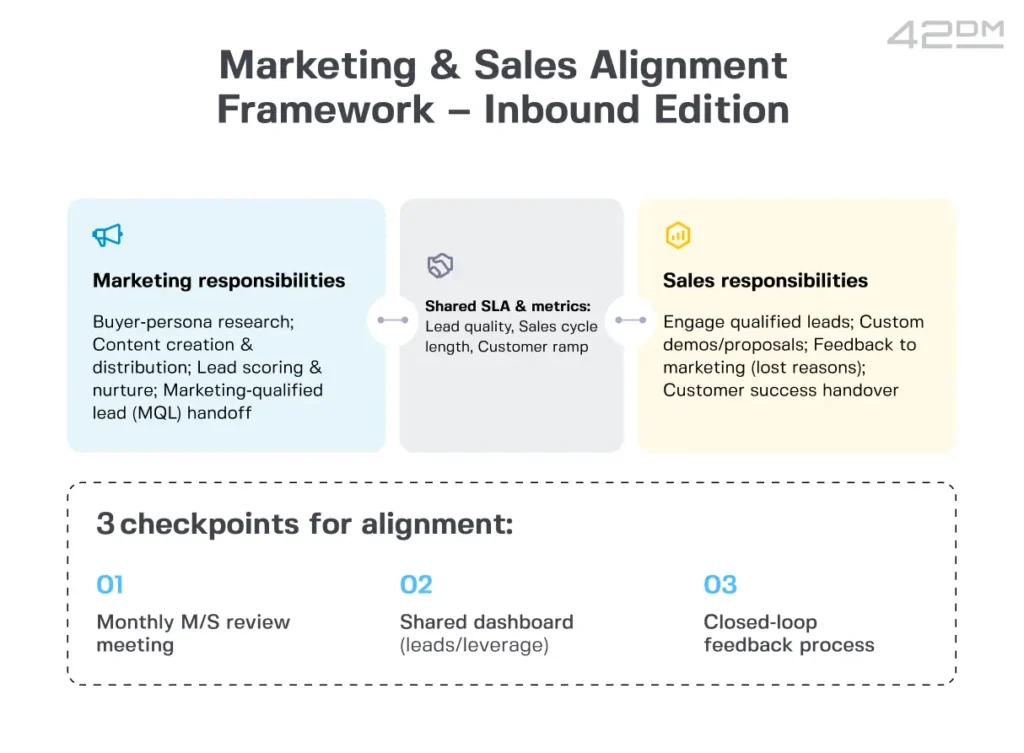
Instead of operating in silos, these teams collaborate through a centralized Revenue Operations (RevOps) framework that streamlines lead management, ABM attribution, funnel visibility, and performance analytics.
Solves:
- Disconnected handoffs
- Lead leakage
- Unclear ROI
How to activate:
Integrate attribution models, implement lead scoring, and unify CRM + MAP systems to ensure qualified leads get follow-up fast. Layer in account-based marketing (ABM) to target strategic opportunities.
Business Impact: Higher lead-to-close rates, lower CAC, and more predictable pipeline growth.
Why it works:
Inbound only works when it drives revenue. With tighter margins, alignment across GTM teams is non-negotiable. RevOps brings marketing, sales, and customer success into a single revenue engine.
Why This Matters in 2026
Inbound marketing is not about more content — it’s about smart, value-rich experiences that mirror how buyers want to engage. Tracking KPI is essential to measure the success of your b2b inbound marketing tactics and optimize ongoing marketing efforts. It works by focusing on understanding your target audience and creating relevant content that attracts, engages, and converts leads. Aligning inbound marketing efforts with campaigns and leveraging advertising platforms helps maximize reach and effectiveness across digital channels. Leveraging these strategies, including a comprehensive campaign across multiple marketing channels, enables B2B to generate more leads and nurture prospects effectively. A successful inbound marketing approach relies on an effective strategy that supports long-term growth. Optimizing your website for mobile devices is also crucial to ensure accessibility and maximize conversions.
B2B tech enterprises that adapt these tactics are already seeing:
- Faster sales cycles through trust-building assets
- Stronger conversion from personalized experiences
- Lower acquisition costs through product-led and SEO-driven tactics
- Better GTM alignment with revenue-focused operations
- Improved results when your audience aligns with your inbound marketing content, and by prioritizing quality content and high quality content to drive engagement and authority
Ready to Optimize Your 2026 Inbound Strategy?
Whether you’re launching a new product, entering new markets, or trying to scale pipeline efficiently — inbound marketing can be your most sustainable growth lever.


